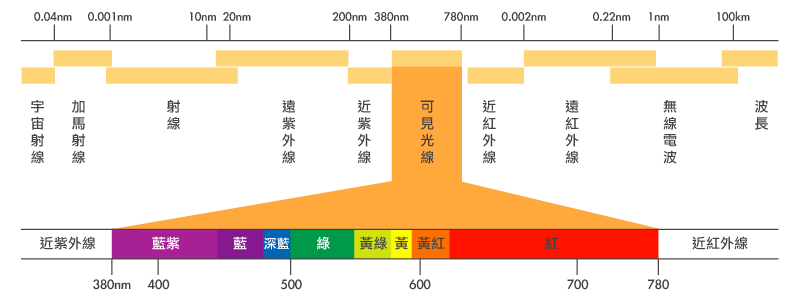重新发现物理之美
nature of reality itself
reality is truly unknowable. (实在性是不可知的)
著名的术语
比如帷幕的例子作为:哥本哈根解释(Copenhagen interpretation),声称只有经过观测才存在,it’s claim that reality was summoned to existence by the act of looking at it.
超距幽灵(spooky action at a distance):纠缠中的电子之间的通信(communication,magically communicate to each other),比光速(最快的)还快?
Einstein’s non-famous thought experiment.(爱因斯坦那著名的思想实验)
lock and key mechanism:锁钥机制,18世纪50年代被用来解释人类的嗅觉,也即不同的化学分子和鼻孔中的感受器(receptor)相match。反例,具有不同结构外形的分子(molecules)却产生着相同的气味(是因为它们的化学键chemical bonds具有相同的振动频率)。
名人名言
In the fantastic world of quantum biology,life is a game of chance, played by quantum rules.
Let There be life.
Albert Einstein(阿尔伯特·爱因斯坦,1879-1955)
- No reasonable definition of reality could be expected to permit quantum mechanics.(没有理性的实在解释能准许量子力学的存在)
- Does the moon cease to exist when I don’t look at it.(我不看月亮的时候它就不存在了吗)
Niels Bohr(尼尔斯·波尔,1885-1962)
Everything we call real is made of things we cannot call real(我们称之为真实的事物并非由真实之物所构成)。
John Bell(约翰·贝尔,1928-1990)
Bohr was inconsistent,unclear,wilfully obscure and right。(波尔的理论前后矛盾,不甚明晰)
著名的试验
水箱波纹试验
量子力学
量子的解释:
爱因斯坦(1905):我们应该完全抛弃光是波的观念,而是要把光当做是a stream of tiny, bullet-like particles. 而他用来形容光粒子的术语正是量子。爱因斯坦看来,a quantum was a tiny lump of energy(一个量子就是一小股能量)。
红色光粒子(each particle of red light)都携带极少的能量,因为红光频率较低。
爱因斯坦的观点:光是由无数小的粒子(particle)或者量子(quanta)组成。
紫外线之所以微乎其微(将灯丝加热再高的温度,也无法产生更多的紫外线),是因为产生紫外光量子需要巨大的能量,是产生普通光量子的100倍以上。
量子的发明者是爱因斯坦,量子力学的创立者是尼尔斯·波尔。
如果旋转(spin)一枚硬币。只要它在旋转,it’s a blur,无法分辨正反,but if i stop it,I force it to decide and it’s heads。 so before,it was sort of not heads or tails but a mixture of both, but as soon as I’vs stopped it, I’ve forced it to make up its mind.(量子力学的经典陈述)
In a sense(某种意义上说),as it spins(当硬币旋转时),the coin is both heads and tails(它可以同时处于正和反的状态)
旋转硬币的例子:
bear in mind that electrons(电子)are among the commonest and most basic building blocks of reality,and yet here’s Bohr(波尔)saying that only by looking (通过观测)do we actually conjure their position into existence(使它们的位置变成真实存在)。
帷幕的例子:
It’s like there’s a curtain between us and the quantum world, and behind it there is no solid reality, just the potential for reality(只有可能的实在).Things only become real when we pull back the curtain and look
纠缠(entanglement):
波尔,纠缠中的两个电子,就像旋转的两个硬币(只不过一个为正的话,另一个即为反),在它们旋转时无法知道其状态(也即非正也非反)。
爱因斯坦,对之的解释(interpretation)是(状态在之前即已确定),就像放在两个盒子中的一双手套,状态在之前即已确定。
In other words, is there an objective reality as Einstein believed,(是爱因斯坦相信的客观实在性),or not,as Bohr maintained,
量子粒子可以同时身处多地。Quantum particles can be in many places at once and send each other mysterious communications。
广义相对论
物质会弯曲时空;
物体(质量) → 弯曲时空 → (其他物体)感受到曲率 → 两者做相对移动
绝对(absolute)与相对(relative)
相对论所讲的不是大小、明暗、轻重,依赖于视角产生的相对性。
而非不依赖于视角,依然表现出相对性。
经典物理学认为的时间距离和空间距离是绝对的,然而爱因斯坦广义相对论的观点看来它们也会随着你的运动速度发生改变。
光谱

波粒二象性
波粒二象性,有图有真相;
波动性:解释了影子模糊的边缘,与气泡的斑斓(内外层不断的反射和折射);(shallows,bubbles)
[1] 波粒二象性,有图有真相
磁场
The Earth’s magnetic field is incredibly weak, 地磁场及其微弱。
photons:光子
we use our eyes for vision,but we also have a second light-detecting mechanism(我们的眼睛还有另一个光探测机制)。
如果用手电照射我们的眼睛,我们的瞳孔会缩小(my pupil closes down)
It’s basically a defense mechanism to protect my eyes.
我们的眼睛会对光粒子做出反应(my eye is responding to particles of light——or photons)。
The energy provided by the photons(光子携带的能量)is clearly enough to activate chemical reactions.
After all, that’s what controls my eye muscles.
Light must be causing similar chemical reactions in the robin’s eyes.
Simplistically, we can think of this brightness as the number of photons reaching our telescope in one second.
感觉器官
our sense of smell is remarkable,and quite different from our other senses of sight and hearing.
among the thousands of scents(气味) that we can recognise many of them may well trigger very powerful memories and emotions.
It’s as though our sense of smell is wired directly to our inner consciousness.
It’s also different in another way. The other senses of sight and hearing rely on us detecting waves: light and sound(广波和声波).
But our senses of smell involves detecting particles——chemical molecules(化学分子).
不同的振动频率意味着不同的气味:different vibrations means different smells